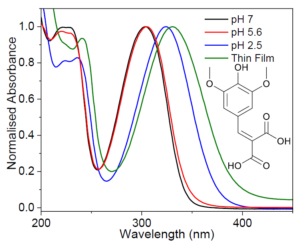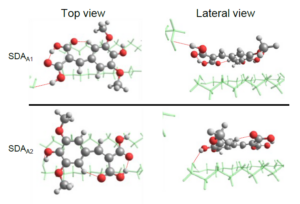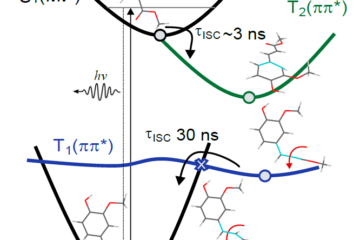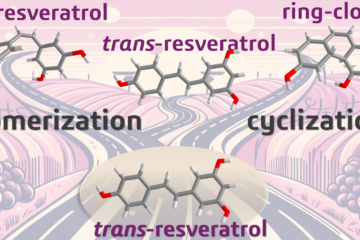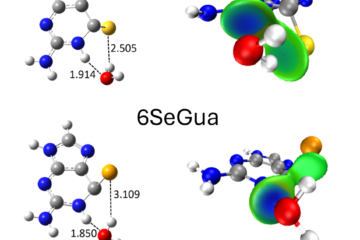How molecular technology could help plants resist the cold.
In brief:
- We developed sinapic diacid (SDA), a molecular heater that converts solar UV light into warmth without disrupting photosynthesis.
- SDA efficiently turns UV into heat; it’s highly stable, non-toxic, and has minimal environmental impact.
- Our multidisciplinary team of spectroscopists, theoreticians, and biologists demonstrated SDA’s potential to enhance crop growth in cold regions.
Boosting Plant Growth in Cold Climates
Temperature is a significant factor in plant growth. Too much cold can slow development, reduce yields, or even kill crops. While greenhouses and artificial heating can help, these solutions are expensive and energy-intensive.
Our research within the BoostCrop framework introduced a new, eco-friendly approach: molecular heaters. These molecules absorb UV light from the sun and convert it into heat, warming plant leaves in a controlled way. The best candidate we identified is sinapic diacid (SDA), a sustainable compound that can be applied as a foliar spray.
Unlike other warming strategies, SDA does not interfere with photosynthesis—it only absorbs light in a spectral region that plants don’t use for growth, making it an ideal tool for protecting crops from temperature drops while keeping their natural processes intact.
Our multidisciplinary team combined experimental and computational techniques to study SDA in detail. The key findings include:
✅ Efficient Heat Conversion – Using ultrafast laser spectroscopy, we confirmed that SDA rapidly converts absorbed UV light into heat through an energy-efficient process. This means it can provide a quick warming effect on plant leaves.
✅ Long-Term Stability – Unlike many organic molecules that degrade under sunlight, SDA remains highly stable even after prolonged exposure. In our tests, only 9% of SDA degraded after two hours of continuous solar irradiation, making it one of the most resilient molecules in its class.
✅ Works in Different Environments – We tested SDA in aqueous solutions, thin films, and wax-like surfaces (mimicking plant leaves). It showed consistent heat conversion across all conditions, proving its adaptability for real-world agricultural applications.
✅ Minimal Environmental Impact – SDA is produced via green chemistry, using sustainable methods and natural catalysts. Unlike synthetic pesticides or fertilizers, it poses no risk to plants, soil, or water systems.
How Theory Helps
Our computational chemistry team in Marseille—composed of Mariana T. do Casal, Josene M. Toldo, and me—integrated the multidisciplinary effort to characterize SDA photophysics.
To understand how SDA behaves in real-world agricultural conditions, we modeled it in the following environments:
- Water (SDA²⁻ form, using implicit and explicit solvation models)
- Gas phase (neutral SDA form)
- A model wax surface (to simulate a leaf’s cuticle, where SDA would be applied)
These simulations allowed us to predict how SDA’s electronic structure adapts to different environments.
We used TD-DFT calculations to investigate what happens when SDA absorbs UV light. SDA reaches an excited electronic state (S₁) immediately after light absorption. Instead of undergoing unwanted side reactions, SDA follows a barrierless pathway toward a state intersection with the ground state (S₀), rapidly releasing energy as heat. This ensures efficient photothermal conversion without molecular degradation.
Since SDA would be applied as a foliar spray, we modeled its interaction with a wax-like surface. The simulations showed that SDA binds via hydrogen bonding, ensuring it stays attached to the leaf. SDA’s structure remained stable, confirming the experimental finding that it would work effectively in a real-world agricultural setting.
BoostCrop Goal
By integrating molecular heaters into farming, we could:
- Increase crop yields by preventing cold stress.
- Expand farmland into regions with shorter growing seasons.
- Reduce reliance on artificial heating, lowering costs and environmental impact.
While further research is needed to fine-tune applications, our study proves that molecular heaters like SDA can help crops resist the cold using sunlight and innovative chemistry.
This work shows the power of interdisciplinary collaboration—bringing together spectroscopists, theoreticians, and biologists to tackle global food security challenges.
MB
Reference
[1] J. M. Woolley, N. D. N. Rodrigues, J. M. Toldo, B. Rioux, C. Groves, X. Schrama, J. Alarcan, T. T. Abiola, M. M. Mention, M. T. do Casal, S. E. Greenough, M. Borja, W. J. Buma, M. N. R. Ashfold, A. Braeuning, T. Munnik, K. A. Franklin, F. Allais, M. Barbatti, V. G. Stavros, Molecular heaters: a green route to boosting crop yields?, Phys. Chem. Chem. Phys. (2025). 10.1039/D4CP04803B
